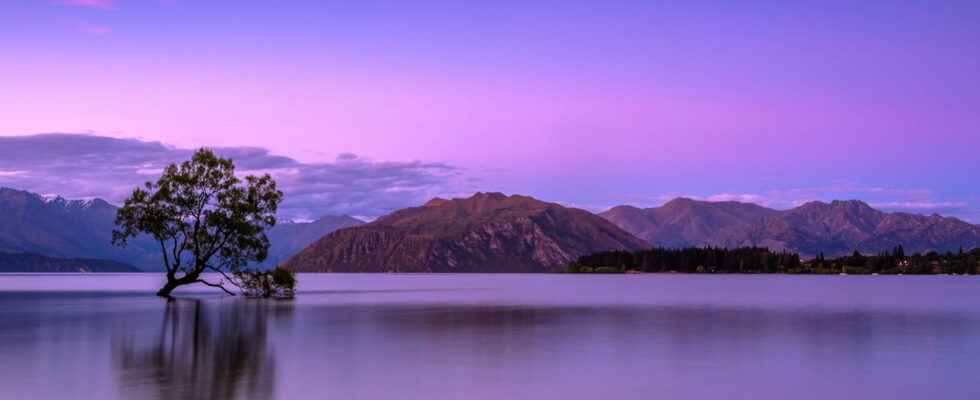Just because you can easily find tons of images on the Web doesn’t mean you can use them anyhow! Fortunately, Google’s image search allows you to sort things out while respecting copyrights.
Google’s image search tool is particularly effective in finding images published on the Internet. By switching to the Images tab from a search – for a word, a series of terms, a proper name, etc. –, a selection of several hundred images is available. Convenient to find something to illustrate a document, a blog or a website. It remains to be seen under what conditions it is possible to use them. Because we must not forget that behind each image hides a photographer, an artist, a brand… who own the copyright.
Unfortunately, no indication of the rights attached to a photo or an illustration is mentioned when choosing an image from the search results page in Google Images. Only a warning message warns that “images may be subject to copyrightr”. It is accompanied by a link Learn more which leads to Google’s copyright help center, where there is educational content. But nothing about the status of the image in question. The only information available is the source where the photo is hosted. This already gives an indication. A newspaper or the website of a business or community rarely offers their content.
What does the copyright-free designation mean for an image?
You have to be careful with the term “royalty free”. Except when it falls into the public domain – which concerns all works over 50 years old – an image always has usage rights, which are registered in a licence. This means that the image is available for sale or use – but not always for free. These are the licenses that limit and regulate its use. Creative Commons is then very useful to be able to use images for free. This is a non-profit organization that has created several licenses, known as Creative Commons licenses – hence the filter used on Google images. Note that there are several categories of licenses for images, which the author must fill in each time:
- Commercial rights: do you have permission to draw a commercial profile from the image without permission from the author?
- The right to adapt: can you modify, even partially, the image?
- Authorship: should the author of the image be cited or not?
- Share Alike: If you use the image, even if you modified it, do you have to give it the same usage rights as the original?
There’s a really easy way to sift through Google Images results to find royalty-free images.
► Click on Toolson the far right under the Google Images search box.
► A new menu appears just below. Click on Usage rights.
► A small drop-down menu appears with three options: All, Creative Commons licenses and Commercial licenses and other types. Select Creative Commons Licenses. And that’s it, all you have to do is make your choice!
► Press the menu located under Allbetween the search bar and the images.
► Options appear on the line below. Scroll it to the right and select Usage rights.
► Two options appear in a drop-down menu: Creative Commons licenses and Commercial licenses and other types. Select the first option. And that’s it, all you have to do is make your choice!
Where can I find images that can be used for free?
There are sites and photo libraries where you can find royalty-free images that can be used for free, sometimes even for commercial use. Here is a small selection, obviously not exhaustive.
- Wikipedia Commons : it is the reference database since it brings together more than 20 million images from all over the world.
- Flickr: a site for exchanging photos mainly from amateurs. Be careful however, you have to filter your search to find photos only under Creative Commons license.
- Freepik : a large database of images (photos, graphics, vector illustrations, etc.) which can be used greatly.
- Pixabay: you will find quality images, whether photos, vector images or illustrations. However, you must register to access certain works.
- Can go : this graphic design tool has an image bank, some of which are free.
- PXhere: this is also a free image bank, with a tag system to better find what you are looking for.
- Pexels: you will find good quality designer images there.
- Unsplash: this site offers a host of images that can be used for free (photos, illustrations, 3D renderings, wallpapers, etc.), some of them of excellent quality. Please note that searches are only carried out in English.
- Freeshot : this site brings together the pictures of the photographer Martin Vorel, without any mention of the author being claimed. You can use them freely, even for commercial purposes.
- Stockvault: a rich image bank with new additions every day.
- OpenClipart : a large collection of clipart that can be used free of charge to illustrate documents.
- Compfight : another photo library offering royalty-free images.
- Freerange : a photo library with free images, all in English.
- MorgueFile : a convenient search engine for finding free images.
- FreeImages : as its name suggests, an image site that can be used for free.
- OpenPhoto : a great collaborative photo sharing platform.
Note that you can use specialized tools like EveryPixel, an engine that allows you to search for all kinds of images on the Web. Simply restrict the search to a selection of free images exclusively by choosing the appropriate option from the menu (Free Only).





